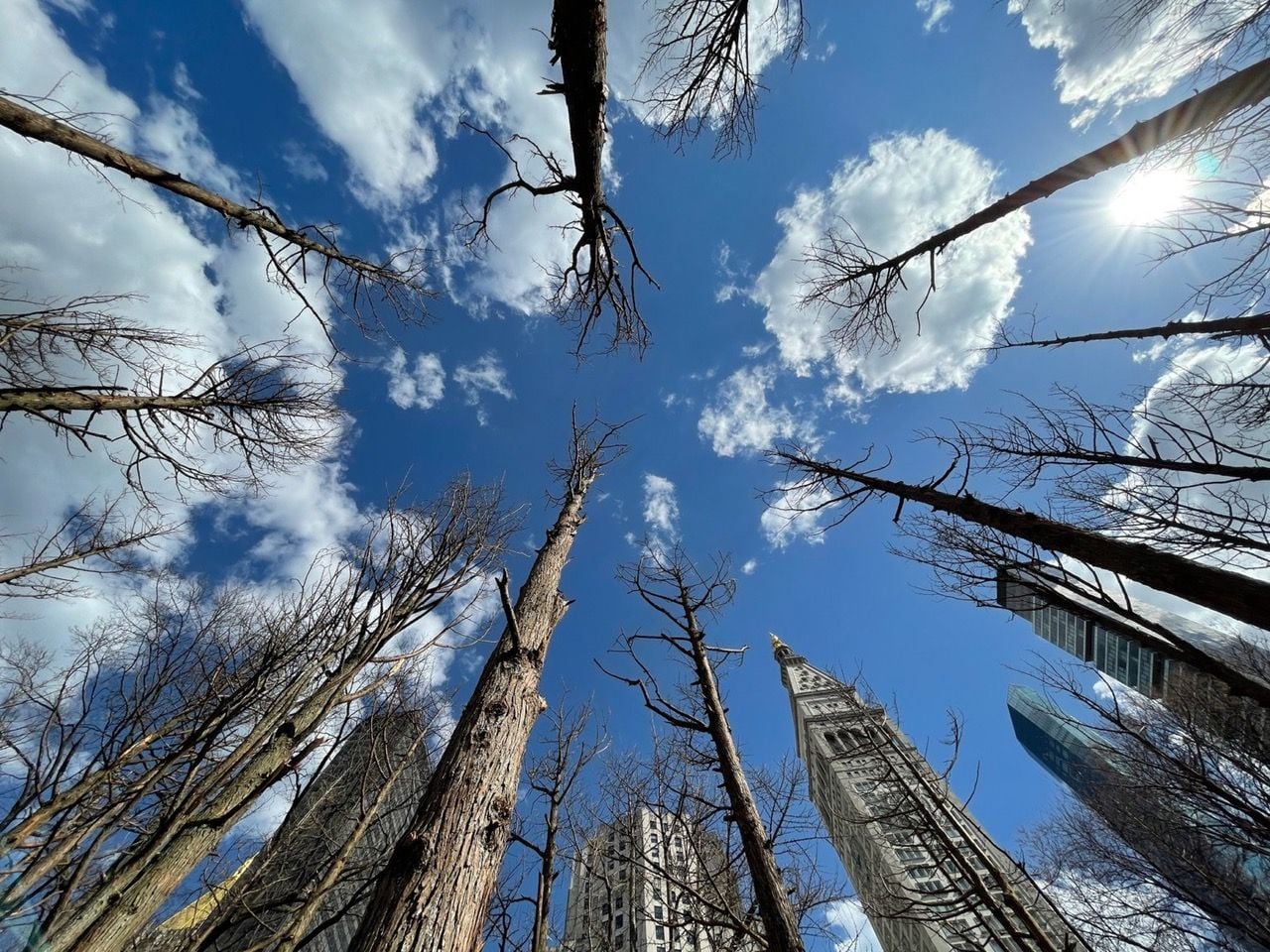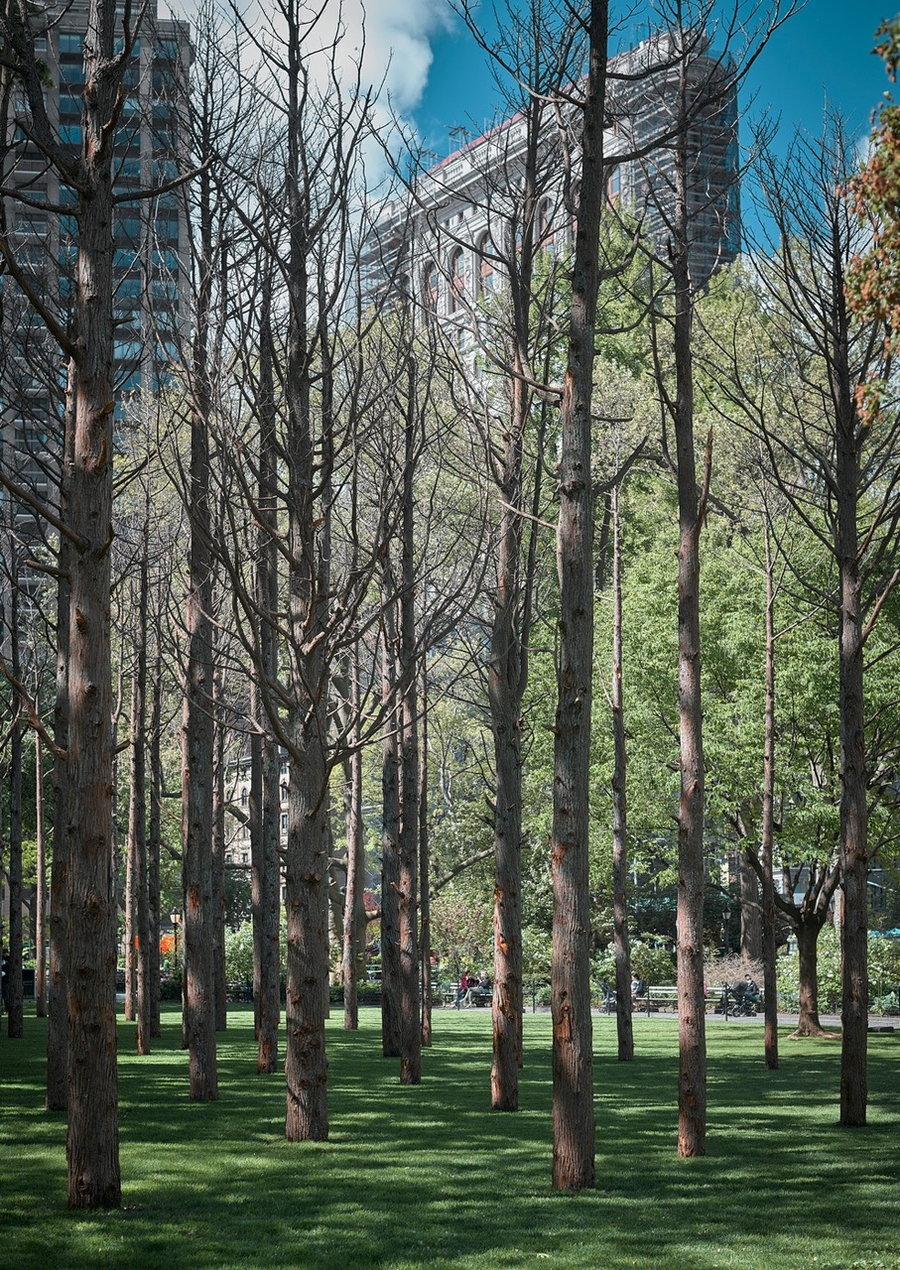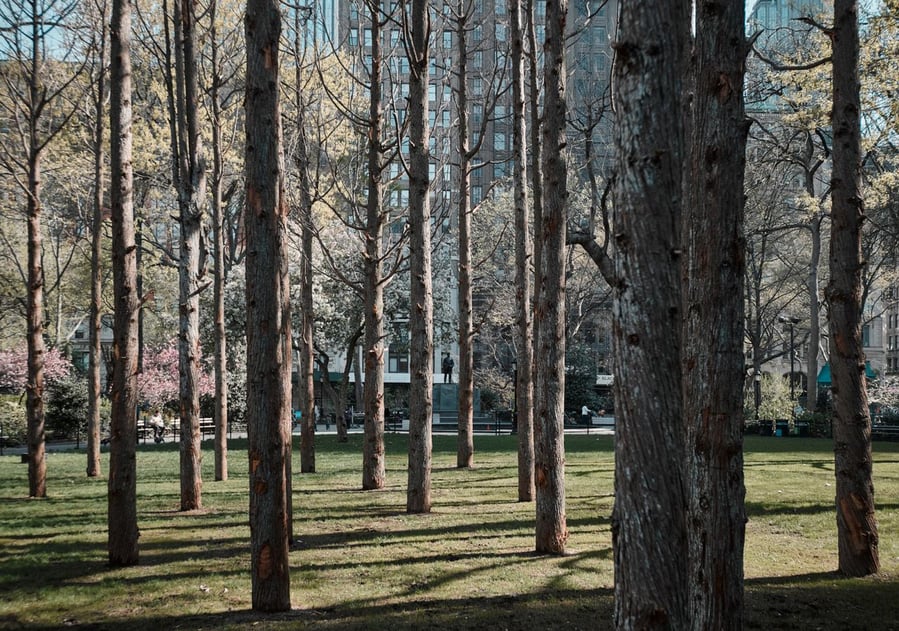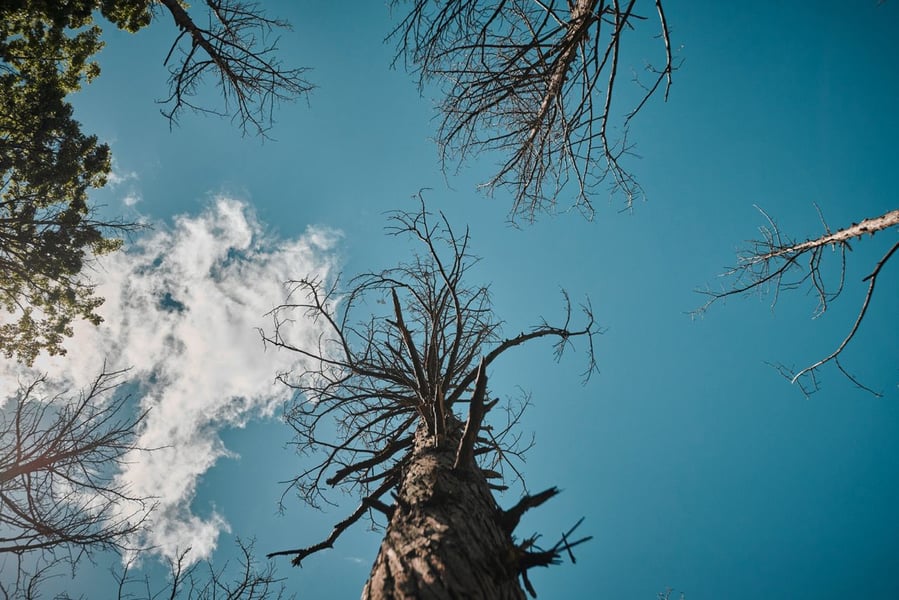Ghost Forest: NYC Installation by Maya Lin Makes a Startling Statement on Climate Change
On the Oval Lawn of New York City’s Madison Square Park, visitors wander into a silvery grove of Atlantic white cedar trees, lured in by the raucous sounds of abundant birds and other wildlife. It may take a few moments to realize the bird sounds are actually coming from speakers, and then look up to see that the trees are all dead. “Ghost Forest,” an eerie installation by famed artist Maya Lin, serves as an echo of Manhattan Island’s past and a warning about its future as the global climate calamity advances.


Each of the 49 trees in the installation was brought up to New York from the Pine Barrens of New Jersey, a site where the impacts of climate change have already come to fruition. This real world ghost forest was inundated by salt water from a nearby estuarine river after Hurricane Sandy in 2012, causing each tree to start rotting from the inside. The standing dead forest looks a lot like others around the country, like the beetle-kill forest near Lin’s family’s summer vacation destination in southwestern Colorado, which helped inspire the project.

Stretching 40 feet into the air, the bare crowns of the cedars remain the same as the living landscape transforms around them. Their placement has been carefully choreographed, with Lin considering each one as its own individual character. The soundtrack of bird and animal calls, created by Lin using the Macaulay Library sound archive of the Cornell Lab of Ornithology, adds an extra layer of mournfulness to the installation. All of these species were once common on Mannahatta (Manhattan Island), the ancestral homeland of the Lenape-Delaware people, more than 500 years ago. None are still present in the area due to urbanization and human activity, and many of the remaining species could be lost in the decades to come. Scientists project that by 2100, 50 percent of all currently living species on the planet could go extinct.
“Each tree is a monument to climate change,” Lin writes on ArtForum. “The project has an advocacy component, which we are using to talk about farming, forestry, degradation, and development. I’m also matching the amount of carbon used in installing the forest by planting a thousand trees around the city. Over ten years, we will actually offset what it took to create the 5.3-ton piece by a factor of ten. Global warming is one of the gravest threats we face, and as an artist and an activist I don’t want to just make you aware of its dire consequences; I want to offer real solutions.”

“Our kickoff public event was a panel discussion on nature-based strategies to combat climate change, and we will continue to explore these issues in other programs throughout the project. Reforming our agricultural, ranching, and forestry practices and increasing protection of both our land and waters could offset between 50 and 90 percent of our current emissions, as well as protect and restore our biodiversity. After the horrific actions of the last administration, we simply don’t have another four years to waste.”

Lin describes the trees as “sentinels,” bearing witness as the park transitions from spring to summer to fall. By the time the installation ends on November 14th, they’ll blend in to the dormant trees around them. After they’re removed, they’ll be recycled into building materials and tree mulch. If you can’t visit in person, check out the audio tour of “Ghost Forest” and listen to the full soundtrack at the Madison Square Park Conservancy website.